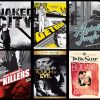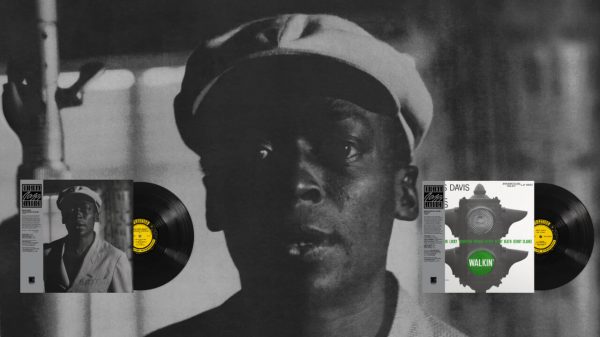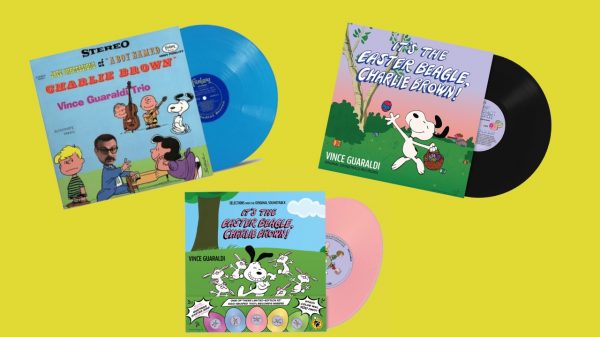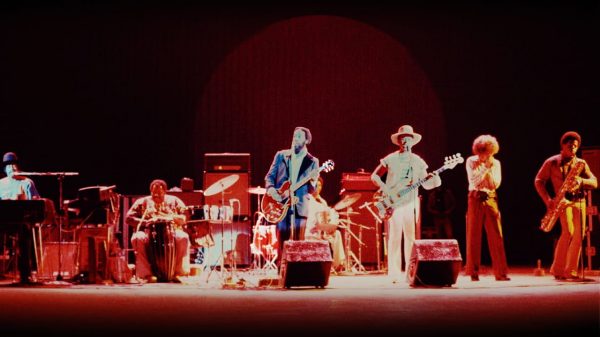I recently posted an interesting link I discovered to the Headphone Audio Facebook group. Mel Magazine published an article entitled “Why grown-ass men get so emotional about Carly Rae Jepsen.”
For those of you that don’t recognize the name, Carly Rae Jepsen hit international stardom with 2012’s viral sensation “Call Me Maybe.” She’s a pretty, mid-30’s, Canadian pop music artist that has been releasing albums steadily for about a decade.
What I witnessed in response to my post was a fascinating and occasionally horrifying look at the divisive reaction to pop music.
Critics’ comments ranged from “she’s what’s wrong with music”, “she sucks,” and a really twisted connection equated with pedophilia. Conversely, the supporters (also all male) used words like “it’s beautiful,” “all-time favorite songs,” “brilliant pop artist,” “one of the best albums of the decade”. There were a few moderates who declared that her music was simply not for them.
Keep in mind, all participants can see each other’s comments, so following up someone’s praise with a seriously derogatory statement is tantamount to directly insulting the other person. Ah, the internet. It certainly allows us to do things we would likely never do in person.
Full disclosure, I administer the Headphone Audio group and I strive to keep the discourse civil. As such, the first two group rules are, “Be kind and courteous. Trolls are not welcome,” and “Hate speech in any form will not be tolerated.”
The article I posted examined the reasons that Carly Rae Jepsen has a substantial male fanbase, why she’s a critical success, and why her music appeals to a male audience. CRJ is the very definition of catchy pop music. It’s fun, incredibly well-crafted, and brings joy when listened to.
So where does the derision come from? Why do the Music Snobs of the group have to vocally discount the tastes of others?
Let’s assume that, in general, someone who joins a Headphone Audio group cares about listening to music. Going by demographics, they are typically a 30+ year-old, male American. Is this sort of person predisposed to become a Music Snob?
Defining the Music Snob
If you google the term “Music Snob”, you’ll be confronted with a whole lot of snappy top 10 lists of “10 signs of a Music Snob” or “10 things Music Snobs say”, etc. While this sort of list is often somewhat playful and humorous, there seems to be an underlying tone of snark and passive-aggressiveness. I’m reasonably confident that the tight-jeaned, black glasses, “High Fidelity” record-store-extra stereotype is played out.
I’d like to discuss what drives the Music Snob, and discover why they are who they are.
The Snob differs from a music fan. They consider themselves an aficionado, and feel that real music fans are rare since a ‘real fan’ must share the same expertise as their own.
The Urban Dictionary provides a few insights into how the Music Snob is perceived.
“An especially irritating breed of tool, the Music Snob is a self described authority on what is or is not “good” music. The genre is irrelevant, as Music Snobs somehow confuse their subjective opinions with objective concrete facts across all genres of music…
… deludes themselves into thinking that their opinions are more valid than those of anyone whose differ…
A person who believes s/he has a more refined taste in music and has much more knowledge in the field of music in general.
Music Snobs feel obligated to enlighten everyone with unwelcome critiques and irrelevant musical trivia.”
A Music Snob is not simply an extreme fan. They are categorized not just for their love of music, but for their negative elements as well. Certainly, there is pride. A vanity in their knowledge. To qualify for the title, the Music Snob must possess a certain amount of narcissism.
“Narcissistic personality disorder… is a mental condition in which people have an inflated sense of their own importance, a deep need for excessive attention and admiration, troubled relationships, and a lack of empathy for others. But behind this mask of extreme confidence lies a fragile self-esteem that’s vulnerable to the slightest criticism.”Mayo Clinic
The Music Snob is supremely confident that their own knowledge and experience has led them to a greater understanding of what constitutes “high-quality” music, and in their ability to differentiate it from “inferior” music. Unfortunately, this confidence is also tied to the need for the Music Snob to display their superiority over others, regardless of feelings, and to criticize those that don’t “get it”.
The Snob is not defined by what they revere, such as being a ‘classical music snob’ or a ‘jazz music snob’ but rather they are identifiable by what they hate. And it can be summed up in three letters. P, o, p.
For our purposes, the Music Snob is characterized by 3 behaviors:
- An absolute belief and pride in the superiority of one’s own knowledge, and in the ability to identify the value (or lack thereof) within specific types of music.
- The desire to display this knowledge and ability, by belittling anyone, through contempt or ridicule, who does not share the same opinions.
- Views current pop music as worthless.
No one can change the Snob’s superiority or tendency to belittle, but perhaps it is possible for us to understand their scorn for pop music.
The Belief that Popularity Decreases Value
There is a truism that states “all people who dislike pop music are not music snobs, but all music snobs hate pop music.”
A common thread to most music snobbery is a disdain for pop music. By its very definition, pop music is popular, and if many people appreciate it, the Snob claims it can’t possibly be of high quality.
How often have you heard that commercial success means that an artist has ‘sold-out’ and compromised their art for money? To the Snob, the elements that made the music unique have been dumbed down to become more suitable for general distribution.
If a musician appears on the popular music charts, or if their song is played on the radio, the Music Snob identifies them as less valuable. As an extension, the people that enjoy and listen to pop music are at best wrong, and at worst loathsome. To the Music Snob, pop music is created for the lowest common denominator, it’s audio pablum and simply isn’t ‘real’.
Where does this belief that pop music isn’t ‘real’ music come from? Literature has had a long-standing theme of ‘romantic poverty’. A real artist starves for their art, where a lack of commercial success is an indicator of authenticity. Perhaps to the Snob, successful popular music can’t be authentic, and consequently, it has no value.
What is Pop Music?
Pop music originated in the United States and the United Kingdom in the 1950s. While pop stands for ‘popular’ music, it does not simply mean all the music on the charts. Until the late 1960s, it encompassed rock and roll, until pop became its own distinct genre. Pop is related to fashion, as it has an ephemeral quality of reflecting current culture.
Pop is typically defined as being accessible and commercial, with the goal of appealing to a wide audience. Very generally a pop song is often between 2.5 and 3.5 minutes in length and consists of a repeated chorus and hooks, interspersed with the verses. Frequently the rhythm or tempo can be danced to.
“Music scholar Timothy Warner said it typically has an emphasis on recording, production, and technology, rather than live performance; a tendency to reflect existing trends rather than progressive developments; and aims to encourage dancing or uses dance-oriented rhythms.”Wikipedia
The simple, catchy, and melodic nature of pop music is often referred to as ‘earworms’. A study, written by Kelly Jakubowski, a music psychologist at Durham University in the UK and published in the journal Psychology of Aesthetics, Creativity and the Arts, identified three main reasons why pop music is so catchy:
- An upbeat tempo and fast pace with a rhythm that people can move to.
- A simple melodic structure, with a rhythmic pattern.
- Unusual and surprising intervals within the song, while maintaining a simple, uniform pattern overall.
The lyrics of modern pop songs often focus on uncomplicated themes of love and romantic relationships. However, in 2018, a University of California, Irvine, report concluded that pop music has become ‘sadder’ since the 1980s. Electronic beats have replaced the elements of happiness. As a result, they found pop music to be more ‘sad yet danceable’.
It’s easy to like pop music. It’s simple and it’s designed this way. It doesn’t take effort or education to relate to and enjoy the music. “Aha, I knew it!” cheers the Music Snob.
Pop Music has Changed
It’s no secret that the music industry as a whole has changed dramatically. The Music Snob is quick to point out that things have changed for the worse. Inevitably, every year brings more music and artists, but is there less diversity on the radio? The Music Snob emphatically says it is so.
It turns out that the Snob may be onto something. An in-depth study of the Music Genome Project (the engine that powers the Pandora music streaming service) suggests that by measuring the similarity of music, it is possible to quantify that the musical diversity of pop songs has decreased over time.
In essence, they broke down songs into 8 components “such as “valence” (roughly the happy to sad spectrum) and “energy” (arousing to soporific)” and applied it to the Billboard Hot 100 music charts.
What they found adds credence to the Music Snob’s claims.
Pop Music is Manufactured
The study’s results showed a trend towards similarity, or less distance between the components of charted songs, with a peak similarity noted between 2012 and 2016. This was attributed to two major changes in the music industry.
1. The number of credited songwriters per song has increased dramatically.
“In the late 80s, the most-common songwriting team consisted of two people, and only 7 songs had more than 3 writers. Today, well over half of songs are written by 4 or more people. Songs with over 10 songwriters are increasingly more common: “Uptown Funk” and “Havana” had 11 songwriters each. With songwriting by committee, one can imagine each individual’s musical quirks are “averaged out,” producing a less unique sound.”The Pudding
2. The total number of hit songwriters and producers has decreased.
“From 2010-2014, the top ten producers (by number of hits) wrote about 40% of songs that achieved #1 – #5 ranking on the Billboard Hot 100. In the late-80s, the top ten producers were credited with half as many hits, about 19%.”The Pudding
This speaks to a much more cookie-cutter approach to hit song generation done by a smaller and therefore, less diverse group of songwriters. It seems the conspiracy theory Music Snobs may have some basis for their fears. Pop is music written by committee.
Keep in mind though, that these are generalizations and certainly don’t apply to every artist that appears on the charts. There are still many popular artists that write their own songs, and bring their own unique and interesting musical style.
“Haters love to say pop stars don’t write their own songs. Not only is this untrue (see Aretha Franklin to Lady Gaga, George Michael to Beyonce), but it’s usually a swipe at women… The haters need to hear this: Carly Rae Jepsen wrote 200 songs for her new album, “Dedicated.”
No, every one wasn’t amazing. Yes, she penned many of them with co-writers. But the number is still astounding.”
Boston Herald
Pop Music Is Becoming Less Complex
The resulting decrease in diversity of pop music creation can be further measured. A study entitled Measuring the Evolution of Contemporary Western Popular Music compared pitch, timbre, melody, and loudness of pop music. It should be noted that this isn’t new news. This study was published in 2012.
“Pop music is too loud and it all sounds the same. That’s the conclusion of scientists at the Spanish National Research Council, who have published a new report on songs released between 1955 and 2010, showing the “diversity of … note combinations … has consistently diminished in the last 50 years”.”The Guardian
This report went on to say that while “Many of [music’s] patterns and metrics have been consistently stable for [this] period,” however, “the diversity of transitions between note combinations – roughly speaking chords plus melodies – has consistently diminished in the last 50 years.” Additionally, the range of sounds (or timbres) used in songs has also steadily decreased.
Yikes.
Are Music Snobs really just altruistic heroes trying to save us from the manipulations of ‘Big Corporate Music’? Are they right that things really were better “back then” when they were young?
Pop Music is the Sound of Today
Conceivably, one issue that the Music Snob has with pop music is that it differs from the music that they grew up with. It turns out that our musical tastes are set when we are young, and this tends to influence our musical tastes as we age.
A 2018 New York Times analysis of Spotify data indicates a strong connection to the music we listened to when we were in our teens (for men it was age 14 when their favorite song was released, for women it was age 13). The article analyzed every Billboard chart-topping song released after 1960.
Also, in 2018, Deezer surveyed “…1,000 people in the UK about their musical preferences and their streaming habits. According to their findings, people tend to experience a “musical paralysis” at around the age of 30.5, whereby they stop listening to new artists or genres and tend to stick to what they know.”
Discovering new music peaks when someone is in their early to mid-20s. This may be tied to one’s ability to be ‘open to new experiences’ which is a personality trait that lessens as we get older. As we progress through our 20s, our personalities are firming up. We’re not quite so open to exploring new things and have become more sure of our own identities.
Let’s not forget that we also start to lose our hearing around our mid-20s as well. The ability to discern higher frequency sound decreases, and we generally become less able to discern changes in pitch. Music may literally sound worse to us as we age.
“Age affects high frequencies more than low, and men more than women. One early consequence is that even young adults may lose the ability to hear very high frequency tones above 15 or 16 kHz.”Wikipedia
All the music that people are introduced to after this time sounds just a little less vibrant than the music they heard during those formative years between the ages of 14-24. The Music Snob likely remembers the popular music of their time as being more exciting and alive. Perhaps they really did hear it that way.
Age and Evolving Musical Tastes
Of course, it’s not quite that simple. We all listen to different musical styles as we age. In fact, one “…study suggests that — while our engagement with it may decline — music stays important to us as we get older, but the music we like adapts to the particular ‘life challenges’ we face at different stages of our lives.
It would seem that, unless you die before you get old, your taste in music will probably change to meet social and psychological needs.”ScienceDaily
The study was published in the Journal of Personality and Social Psychology and included results from over a quarter of a million people accumulated over a decade. It divided music into 5 general categories “that share common musical and psychological traits — such as loudness and complexity”.
- Intense (punk, metal)
- Contemporary (pop, rap)
- Mellow (electronic, R&B)
- Unpretentious (country, folk, blues)
- Sophisticated (jazz, classical)
The study proposed that as our lives progress from adolescence, through adulthood, to middle age, people are drawn to different musical genres that best reflect their current life state and daily reality.
Teenage rebellion turns into adult relationship building and finally into stability, family, and social status. I’ve summarized the results as best I can in the chart below.
Life Stage Life State Music Category –
Psychological TraitsMusic Genre Adolescence
to
Early AdulthoodRebellion, identity,
and independence. Intense:
Aggressive,
tense, and
characterized
by loud, and
distorted sounds.Punk,
MetalEarly Adulthood
to
Early Middle AgeGaining acceptance,
intimacy, and building
relationships.Contemporary, Mellow:
Romantic,
emotionally
positive, and
danceable.Pop,
Rap,
Electronic,
R&BMiddle Age Sentiments of family,
love, and loss.
Nurturing a family
and maintaining
long-term relationships.
High culture linked
to social status and
perceived intellect.Unpretentious,
Sophisticated:
Positive and relaxing.
Emotionally direct.Country,
Folk,
Blues,
Jazz,
Classical
The popular music of one’s youth is far from the popular music of today. And it was this music that cemented the Music Snob’s love. The Snob’s tastes may have changed and matured as they aged, but it’s likely those tastes just moved further and further away from current popular music.
Also, as we age, we tend to discredit the tastes of youth. Describing pop music as “teeny-bopper” or “bubblegum” imbues it both with childhood and triviality. Parents just don’t understand. This isn’t a new phenomenon; the now revered Beatles were the consternation of many parents when Beatlemania roared across the world.
So, let’s regroup. The Music Snob tends to be male, approaching middle age and has disdain for current popular music. While we’ve looked at why this may be, it’s important to recognize that gender may also play a formative role in the Snob’s beliefs.
The Deterioration of Rock and Roll
Rock and roll was popular music when many Music Snobs were growing up. It is the sound of their youth, rebellion, and independence. It’s also the sound of men.
“Less than 8 percent of the Rock & Roll Hall of Fame’s inductees are women.”LongReads
And rock music is dying.
Lenny Kravitz sang about it in 1995. Gene Simmonds declared rock dead in 2014. Forbes stated in 2017 that “But rock ‘n’ roll is dead. No, really this time. Chuck Berry’s death this past weekend is a poignant reminder that the form he invented in the 1950s has evolved out of existence.”
Some are happy to see it go.
“Rock Is Dead, Thank God… It’s time to face the reality that rock has been eclipsed by pop, hip-hop, and EDM, and accept that it might actually be a positive thing for the genre.”Vice
‘Rock and roll is dead’ may be a tasty sound bite, but I think it’s fairer to say that pop music has simply evolved away from rock. There are, and likely always will be excellent modern rock artists. However, pop culture will continue to change and with those transformations, the popularity of different musical styles will wax and wane.
Starting in the late 1960s, the term ‘pop music’ was created to differentiate it from rock music. At that time, pop strove to be more accessible and commercial, reflecting current tastes and culture. Rock made efforts to be perceived as authentic and evolved. What was heard on the radio began to change.
Let’s not discount that rock and roll is extremely important to many Music Snobs. To them, rock icons are typically men with genuine instruments, making “real” music, very unlike the electronic-based music of today (1980’s synthesizers lead to the advent of Auto-Tune).
Pop music is often regarded as the feminine to rock and roll’s masculine persona. And when something you love is threatened, it’s natural to lash out at what is replacing it.
The Gender of Pop Music
Let’s go back to the beginning and consider Carly Rae Jepsen. To many, the young, female artist is representative of modern pop music. It’s easy to think of many such artists including Taylor Swift, Ariana Grande, Katy Perry, Lady Gaga, and their ilk.
“Despite its cultural dominance, pop music is so often dismissed as immaterial, shallow, ill-conceived, trite, and overly produced, among other accusations… This attitude is not merely harmless preference. It reveals hidden truths about class, gender, and personality… How fortunate that a genre largely dominated by women — often of color — that centers the emotional landscape of common people, is of least artistic value.
Anecdotally, anti-pop sentiments are often thinly veiled anti-woman sentiments filled with misogynist and homophobic subtext.”The Sunflower
Pop music is often targeted at female audiences. Somewhat ironically, with this intended audience, female pop stars are often overtly sexualized, reducing them to more of a cut-out persona than a real person. It is a struggle for the female pop star to be taken seriously.
The pop phenomenon of boy-bands and girl-groups seldom make it on very many respected music reviewer’s top lists. These groups saw their popularity rise in North America in the 1990s. Now groups such as BTS and Blackpink have come to dominate the modern K-pop music scene.
“The Backstreet Boys and ’NSync were definitely styled to be palatable to teen girls, to look younger than they really were and more feminine than they might have otherwise been. Maria Sherman, who just wrote a book about boy bands, recently shared a Simpsons screenshot of a teen magazine with the title Non-Threatening Boys. Boy bands are not quite in the precipice state where they have sexuality, and they’re also not confident in it in the way an adult male is seen to be. Forced naivete allows boy bands to emulate femininity in a way that is not taken as a danger to the heteronormative order.”Sasha Geffen (Author, Glitter Up the Dark)
These polished ‘boy’ bands are far from the hyper-masculine ‘men’ who were the rock icons of the Music Snob’s youth, who sang about sexual conquests or the old fashioned love between a man and a woman. This new generation of pop icons can tread into uncomfortable territory for a traditional Music Snob.
Pop Music and Gender Rebellion
Pop music is also widely considered the music of the LGBQT+ community. Perhaps ironically, the music manufactured for general receptivity has been embraced by those also fighting for wider societal acceptance.
Gender rebellion and androgyny have long defined pop superstars. Prince, David Bowie, Missy Elliot, Grace Jones, and Annie Lennox come to mind. The use of the synthesizer to alter the pop singer’s voice blurs the lines between genders and what is natural or accepted.
“Lady Gaga, who has been open about her bisexuality since her career beginnings, was instrumental in once again moving the needle forward for queerness in pop. With her 2011 hit “Born This Way,” she single-handedly promoted self-acceptance and inclusivity and celebrated the LGBTQ community. It’s since become a universal anthem embracing individuality and sexuality.
But 2012 marked perhaps an even bigger moment in the queer pop community. With the release of his debut album Channel Orange, Frank Ocean ignited an important conversation around same-sex relationships in music… As a young, black, bisexual man in the public eye, sharing his journey was instrumental in opening up doors for artists in pop and R&B to tell reveal themselves and talk about love and sexuality beyond the binary.”Why Pop Music is Getting More Queer’ – i-D
The female pop icon is representative of the struggle for acceptance and for recognition of worth. This struggle is familiar territory for those making their way in a heteronormative world.
“To idolize a female pop star is nothing new for queer-identifying men… our fascination with female pop stars stems from the basic need to relate and to feel seen and understood. It’s something gay men have a difficult time sourcing in a heteronormative society. The pop star struggles to be taken seriously; it’s a very familiar sentiment experienced by queer people.
Gays have long sought acceptance, and pop divas have taken us in with open arms when no one else would. They shared their struggles, talents and tail-shaking bops with us. In return, we’re unwavering in our devotion and support…”‘Why Do Gay Men Idolize Female Pop Stars’ – In Magazine
Are conscious or unconscious homophobic and misogynistic biases at the root of the Music Snob’s devaluation of pop music? Certainly, these beliefs are widespread, and they have shaped the music industry.
The Underrepresentation of Women in the Music Industry
The last few years have shone a spotlight on the discrimination that is embedded within North American society. The popular music industry is certainly no different.
“The radio industry is staggeringly uniform. The Federal Communications Commission (FCC) recently reported that only 7% of FM stations are owned by women and less than 3% of FM licenses belong to minority broadcasters.”Rolling Stone
While it’s easy to equate pop music with the women who create it, women are absolutely underrepresented in the industry. A 2018 report on popular music from the USC Annenberg School for Communication and Journalism showed that:
- In 2017, only 16.8% of music artists were women (a six-year low).
- Of 2,767 songwriters credited, only 12.3% were female.
- Of 651 producers, only 2% were female.
- Of a total of 899 Grammy Award nominees between 2013 and 2018, only 9.3% were female.
These numbers are shockingly unfair. And frankly, it makes me angry.
What the Music Snob and Pop Music Means to Me
Does the Music Snob realize what they are? And if they do, do they know what has made them this way? What forces have aligned to mold their bad behavior?
These questions are not easy to answer. Is the Music Snob simply defined by ageism, narcissism, toxic masculinity, snobbery, and clinging to the music of their youth?
It’s time we all did some self-reflection. Especially those of us music hobbyists who fit the demographic of the Music Snob. We all need to make sure we are not normalizing discrimination and hatred, veneered as musical taste.
Pop music is often designed to appeal to a young female audience, and it’s been embraced by the LGBQT+ community. I can not state strongly enough that those aren’t valid reasons for discounting the value of pop.
We also should reevaluate our own relationship with pop music. Approach it with eyes wide open. We must decide on the worth of pop for ourselves. Should we be concerned that we are being manipulated when we listen to pop music?
Pop music is simple and easy to like. It is purposely manufactured to be catchy. And it’s true that it has changed and become less diverse. More of it is being written by committee, and their members are few.
I may not fit the target demographic, but I’m a lifetime pop music fan. I have a history of appreciating the music created by young female artists. Over the years, my absolute favorite records of the year have included Sinead O’Connor’s, Lorde’s, and most recently Billie Eilish’s albums.
In that fateful Facebook post that spurred this article, I used the term “guilty pleasure” for listening to Carly Rae Jepsen. Likely I was feeling guilty because I feared others would judge me for what I enjoy. By couching it as a “guilty pleasure”, I was dismissing its value.
There should be no guilt in listening to expertly crafted pop music. Pop is no less valuable than any other form of music. Full stop.
“I never minded being thought of as a pop star. People have always thought I wanted to be seen as a serious musician, but I didn’t, I just wanted people to know that I was absolutely serious about pop music.”George Michael
I certainly see myself in the study that tracks changes in our musical tastes as we age. Tucked in beside those early New Order, Madonna, and Pet Shop Boys albums on my shelf, you can now find Dolly Parton, Beatles, and Cat Stevens. Young me would have been surprised.
Admittedly, it’s disheartening to see the growing uniformity of the pop music creation process. It’s sickening to comprehend the level of underrepresentation of women in the music industry. It means that as fans we need to try harder to support all the great and unique artists out there.
Music is important. It’s art. And like all art, its intrinsic value is in the eye (or ear) of the beholder. Opinion, popular or not, must never change what it means to you.
You like it? Pop makes you happy? Then it’s worth cannot be diminished. Don’t listen to the Music Snob. What they say isn’t of any value.















































Charles
June 23, 2022 at 1:58 am
Agree with a lot, disagree with a lot too. Talking about LGBTQ history, clearly this was either completely ignored or outright disregarded, that one of the founding metal bands, aka Judas Priest, has been fronted by an openly gay man since 1973 and still going strong. If anything, it is the metal community that began as a haven of acceptance for LGBTQ. And, that same man can put most pop artists to shame with his singing prowess even at 70 yo.
yz
April 18, 2023 at 2:14 am
What “rise” of the “music snob”? Whatever “snobs” there are merely represent drops in the ocean of people who listen to top 40 music!
With all my respect for figures of historical importance like Annie Lennox, and being a pretty great fan of Cocteau Twins, Kate Bush, Björk, Beth Orton, Fiona Apple… you can’t force me as a queer person to like Taylor Swift or Blackpink only because they’re female, and neither can you force serious music reviewers to acclaim them for that matter.
Blackpink’s Album (product of a K-pop industry that is largely state-funded to ensure soft power), despite being far more popular, holds little value compared to a musical gem like Pizzicato Five’s Happy End of the World from 1997, a crowning jewel of the Shibuya-kei hipster movement in Tokyo. Janet Jackson’s The Velvet Rope from the same year was more forward-thinking than most of the output from the pop icons mentioned in this article.
Anyone who claims to be progressive and feminist should really be far more critical of the pop music industry and capitalism, instead of embracing them as long as they seem to bring emancipation for women and for LGBT+ people. Even one of the quotes suggests that pop music, more often than not, doesn’t go much out of the way to be progressive, unless that can bring shock value.
The kind of “music criticism” this article promotes should receive massive backlash in coming years, considering all the payola that went into convincing anyone remotely progressive that they can’t be really progressive if they don’t appreciate pop artists that the corporate label industry wants to shove down everyone’s ears. There’s a rock band that’s called: Pop Will Eat Itself.
RMS81
November 29, 2023 at 2:24 am
Madonna is a pop icon and has been one of my role models for 25 years. She has been attacked by music snobs for about 40 years but she hasn’t let their attacks bring her down. She is a true free spirit who lives an uninhibited life and ignores many social conventions. Plus, she writes all the lyrics and melodies to her songs. She has music substance and her songwriting and production is extremely versatile.
I really admire what she has done with her life because she really doesn’t care about the snobs and keeps forging ahead with her career with or without them.
Dctrmusic
December 28, 2023 at 1:37 am
By calling people names you invalidate much of what you say here. Much of popular is objectively poorly done, based on fundamentals of music that are taught in 5th grade. Noone cares what you like. But don’t insult people who are genuinely knowledgeable about music, beyond “I like this.” Music can be objectively examined. That doesn’t make someone hateful. And not everything about music is an opinion. Educated musicians have more value than your ignorant opinions. Those people work hard. If you listen, you may learn something.